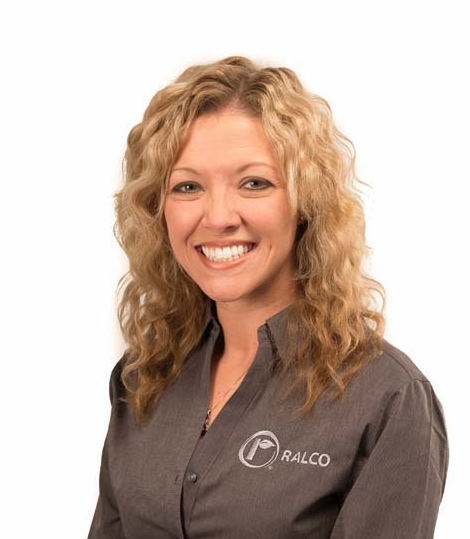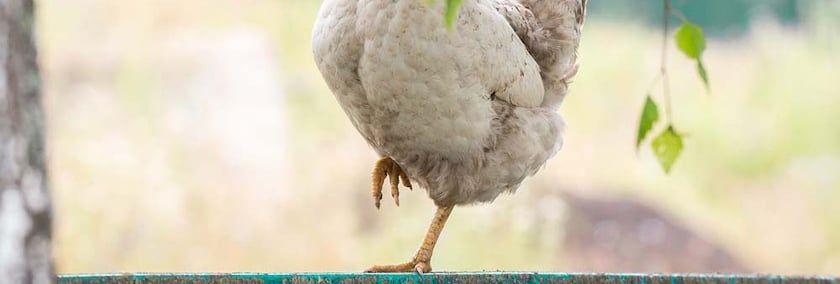All Bound Up
Egg binding: What to look for and when to call for help


In birds, a slow or difficult labor—dystocia—is called egg binding. When a bird is egg bound, the egg essentially gets stuck and cannot pass out of the bird. Egg binding is unfortunately fairly common in small flocks and is a potentially life-threatening condition.
In birds, the uterus is also known as the “shell gland” because its function is to lay the shell onto the outer shell membrane. The egg spends around 20 hours in the shell gland forming and calcifying the shell, and this is also where pigment is added to the egg.
The egg then passes through the uterine sphincter and into the vagina which is a short muscular tube which helps to push the egg out of the hen’s body. The vagina is where both the cuticle which protects the egg from bacteria is formed as well as a natural lubricant added to help the egg pass through the cloaca.
What to watch for
Has your hen stopped laying? This is the most common sign that a hen might be egg bound Watch the bird to see if she has difficulty walking, if she is straining, or if you can see an egg in the cloaca.
Egg bound birds will often show excessive straining—the hen may consistently act like they are about to lay an egg, but no result.
She may go in and out of the nest box repeatedly, and may walk with a penguin-like posture.
In some instances, their abdomen might be distended, so comparing her with other birds of the same size and build can be helpful.
The bird may act depressed and isolate herself from other birds and close her eyes frequently like she is resting; she may not have an appetite. Look for lack of defecation or diarrhea.
Egg bound birds may have difficulty breathing and increase respiratory rate, or could collapse. The comb could change to a crimson color and then turn to a deep blue or purple, due to a lack of oxygen. She may appear lame or seem to have paralysis. Any of these signs can vary depending on the condition’s severity.
What can I do at home?
Egg binding can be fatal so it should be addressed quickly. In some instances, supportive care can help the hen pass the eggs. However, if the bird is in severe distress and/or the supportive care fails, it is important to seek veterinary care.
If you suspect your bird is egg bound but she is not yet in distress, you can start by placing her in a quiet, dark, temperature-controlled environment away from other birds. Try placing her in a shallow lukewarm bath for 10-20 minutes—Epsom salt can be added to the water.
Gently dry her off, but be very careful massaging or palpating the bird’s abdomen or feeling for an egg. Internal egg rupture can be fatal. Place a small amount of lubricant to the vent area to attempt to help her pass the egg.
If the supportive care fails, or you believe an egg has ruptured, seek veterinary care.
What to expect at the clinic
Veterinarians will physically examine her to determine the severity of the condition. They may palpate the abdomen, and this is most fruitful when the egg binding is caused by a normal calcified egg.
Sometimes, your veterinarian may need the assistance of imaging like radiographs (x-rays) and ultrasound to diagnose the bird’s condition appropriately. Radiographs are most useful for determining the location of egg(s) that have some shell present. Ultrasound is best when a soft-shelled, shell-less or ruptured egg is causing the issue.
Treatment for egg binding may involve supportive care, medical care, and sometimes surgery. Certain medications can help the bird pass the egg. Sometimes nursing and supportive care in a hospital setting is enough. The veterinarian may administer calcium injections.
It becomes an emergency situation if the bird is very stressed and struggling to breathe, and the veterinarian may perform a surgical procedure to remove the egg. In some instances, antibiotics may be needed to prevent or treat infection. The veterinarian may also give anti-inflammatories to help with swelling and discomfort.
The earlier the egg binding is caught and treated, the better the prognosis.
If the bird has reached a stage where it has collapsed, has difficulty breathing or has difficulty using its legs, the more guarded the prognosis, so see your veterinarian as soon as possible.
What causes egg binding?
Certain factors predispose birds to egg binding; these include very young birds (production before the pelvis has matured) and very old birds. Obesity, inappropriate nutrition, dehydration, and excessive egg production are known factors.
Additional contributing factors and underlying causes include hypocalcemia (low blood calcium), excessively large eggs including those with double yolks, pecking resulting in trauma to the vent and even the reproductive system, and mycotoxin contamination of the feed.
Malformed eggs, infection and inflammation of the reproductive tract and concurrent illness or environmental stressors can also lead to egg binding.
Can it be prevented?
Avoiding factors above. These are the most important ways to reduce the risk of egg binding.
Keep standard lighting schedules as this reduces production of double yolk eggs. Control obesity by monitoring body weights frequently and controlling feed intake. Preventing obesity is extremely important because overweight hens can have loss of muscle tone, excessive fat, and have trouble passing eggs appropriately.
Feed a complete and balanced diet with adequate calcium designed for layers. Calcium is essential for both eggshell production and proper muscle contraction in the egg laying process. Provide plenty of fresh clean water daily. Prevent cannibalism and check birds regularly for damage and wounds including those of the vent.
Recognizing the signs gives flock owners the ability to catch egg-bound hens early, giving them the ability to act quickly, know when to call for veterinary assistance and improve outcomes for their hens.
About the author
Dr. Jessica Fox is a mixed animal veterinarian in Southwest Minnesota. She has expertise in research and development, with particular focus on improving gut health through natural solutions, and is passionate about disease prevention through biosecurity.
August 24, 2023
Tags:Poultry Advancements

Chicken Whisperer is part of the Catalyst Communications Network publication family.












